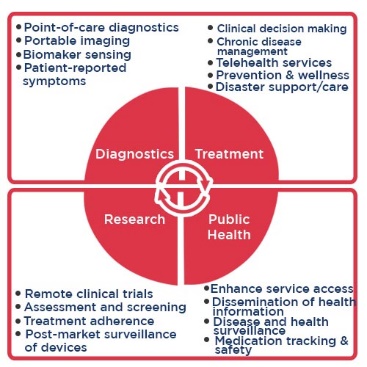In-Brief:
- The patient registry is a specific study or a detailed survey of research question or hypothesis generally.
- Clinical research statistical service is a collection of data from a particular population; the following details explain the patient registry and their methodological and operational aspects.
- Pepgra strengthens your knowledge about the patient registries in the medical field to develop future clinical aspects and studies in the clinical biostatistics and programming.
INTRODUCTION
Patient registry is a coordinated system takes place using observational methods to acquire unwavering data on patient population based on the specific disease, exposure and conditions. It follows the time. The patient disease registries are created by public organizations, including educational institutions, medical research association and clinical study design. The overall objectives may vary such as to explain the natural history of a disorder, to analyze the impacts of disease on patients health and routine life, to find patients with an affinity for new treatments. The registry also used for the evaluation of the safety of medicines and in the Clinical Biostatistics service.
PATIENT DISEASE REGISTRIES
Our biostatistics consulting services consider these essential factors to create and maintain a patient registry they are.
- Patient population
- Time elements
- Core data elements
- Terminologies
- Quality management
- Safety analysis
- Governance
PATIENT POPULATION
The patient population should be with more excellent care, and various factors influence the selection of community. It is vital to ensure comprehensive enrolment of patients and bias selection with the Clinical Biostatistics & Statistical Programming Service during the therapeutics of clinical research.
The four essential steps to be carried out in our biostatistics programming services are.
- To create a logical definition on selected population.
- Convert logical description into the operational definition
- Make a process in which enrolled patients should represent the working definition
- Complete follow up on each patient to gather a detailed data
TIME ELEMENTS
The accurate follow up on date and time is essential in the Biomedical research as it is the primary factor for the computation of period critical to the valid analysis of data includes time difference between registry entry and exposure to medicines, different treatment time and the onset of adverse events on a particular interest, recovery from an adverse effect, effectiveness time, clinical improvement time etc.
Clinical Biostatistics Consulting Services have the time elements that varies based on disease and various factors but there are some major time elements should be present in any registry are:
- Patient dates include the date of birth, date of death, date of pregnancy, registry entry date, registry exit date, informed consent date.
- Disease dates include the date of the first symptom, date of early diagnosis, date of a definitive diagnosis, date of cure or improvement, date of relapse, date of comorbid events occurrence, date of the resolution of comorbid events
- Investigation dates include the date of test 1, test2, test 3
- Treatment dates include start date, stop date
- AESI dates include the date of any AESI occurrence, date of any AESI resolution
- Other event dates
- Observation dates include the date of follow up
CORE DATA ELEMENTS
Core data elements are the harmonized data form on all patients the information of the same disease in all registries should be identical to maintain standard data quality system, data exchange, formal data analysis for many patients and to compare the results of different registries in the Statistical programming CRO services.
The most critical data elements for patient registries are
- Patient data
- Disease
- Co-morbidities
- Disease-related treatments
- Other therapies
- Adverse effects
- Pregnancy

TERMINOLOGIES
The data harmonization, it is essential to change native languages to international terminologies, the guidelines for languages are followed based on the suggestion from EMA as per the clinical trial statistics service.
QUALITY MANAGEMENT
Clinical research biostatistics services quality management involves four main activities they are.
- Quality planning
- Quality assurance
- Quality control
- Quality improvement
There are four main requirements of data quality
- Consistency
- Completeness
- Accuracy
- Timeliness
SAFETY ANALYSIS
Statistical programming CRO’s Safety analysis involves
- Reporting of safety information
- Monitoring of adverse effects of special interests
- Aggregate analysis of adverse effects
GOVERNANCE
Most registries have a governance model relying on principles and constraints based on their mandate operating procedure, legal environment or funding sources. Registry coordinators, MAA/MAH and regulators, strengthen the use of registry data
CONCLUSION
Patient registry is an essential aspect of medicinal regulation as valuable data sources on disease and treatment. In the pilot phase and specific disease-related workshop, it is necessary to consider some factors such as a recommendation from the regulators on the type of data, an acceptable level of quality and requirement regards safety reporting guided by Pepgra.
References:
- McGettigan, P., Olmo, C. A., Plueschke, K., Castillon, M., Zondag, D. N., Bahri, P., … & Mol, P. G. (2019). Patient Registries: An Underused Resource for Medicines Evaluation. Drug safety, 42(11), 1343-1351.
- Culver, D. A., Behr, J., Belperio, J. A., Corte, T. J., de Andrade, J. A., Flaherty, K. R., … & Ryerson, C. J. (2019). Patient registries in idiopathic pulmonary fibrosis. American journal of respiratory and critical care medicine, 200(2), 160-167.
- Rice, H. E., Englum, B. R., Gulack, B. C., Adibe, O. O., Tracy, E. T., Kreissman, S. G., & Routh, J. C. (2015). Use of patient registries and administrative datasets for the study of pediatric cancer. Pediatric blood & cancer, 62(9), 1495-1500.






